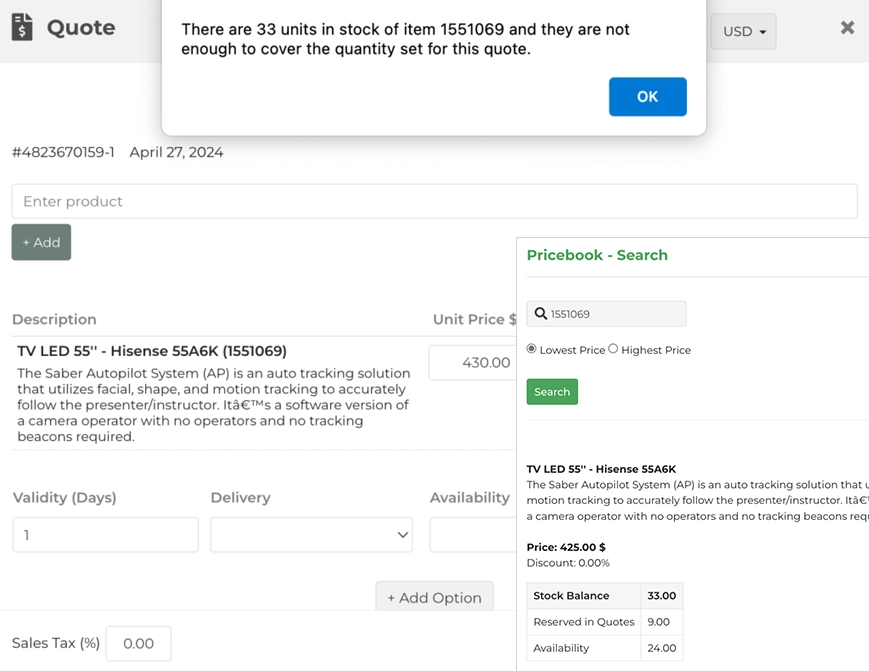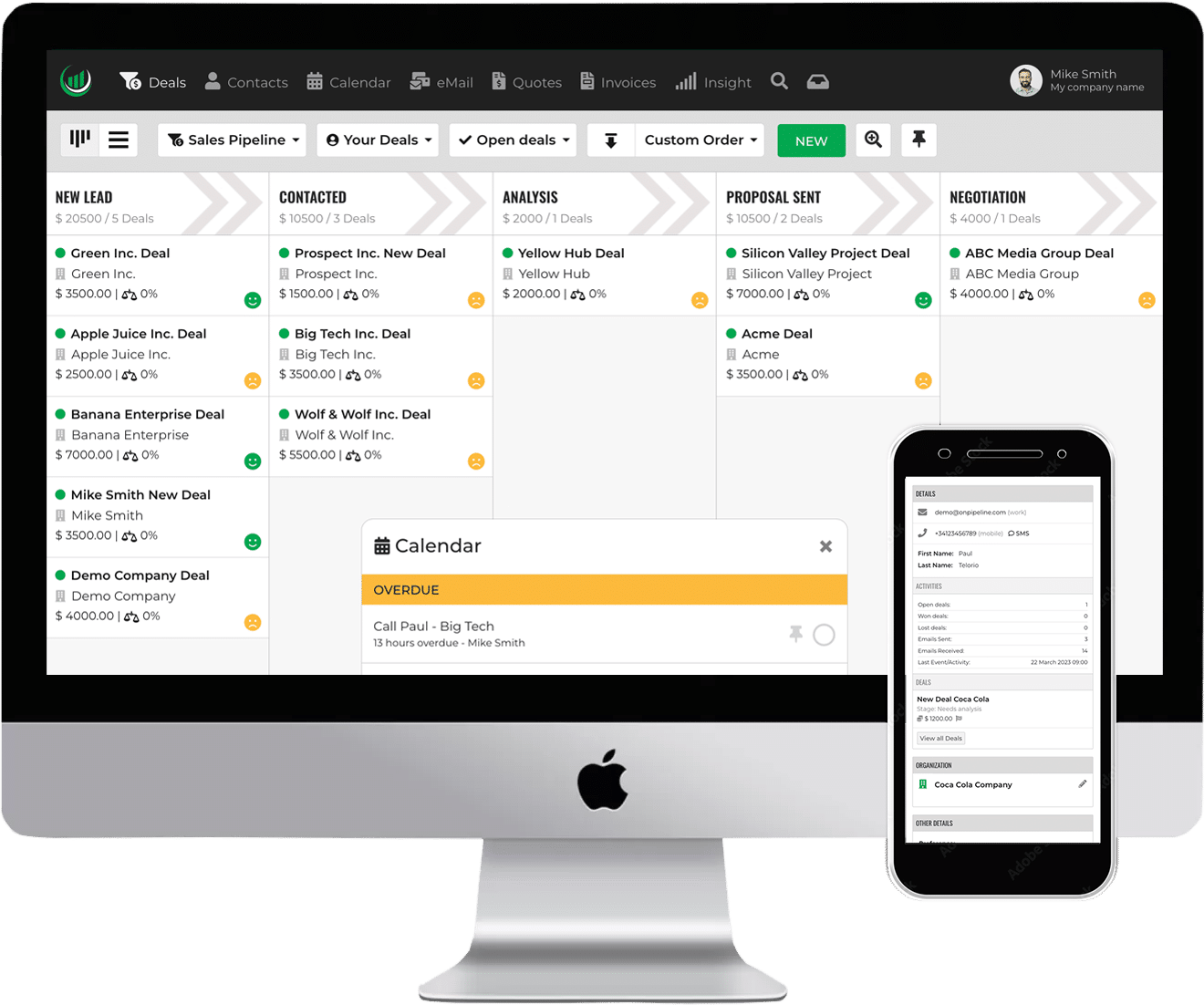Sales inventory or stock refers to the quantity of goods and materials a business holds that are ready for sale to customers. This inventory is a critical component of many businesses, particularly those in the retail, manufacturing, and wholesale.
Real-time inventory data provides up-to-the-minute information on stock levels, enabling companies to respond swiftly to changes in demand and supply conditions.
Impact on Sales
With current data, sales teams can adjust their tactics based on the stock levels of particular items. For example, if an item is overstocked, the sales team can push it more aggressively using discounts or special offers.
Overall, efficient inventory management is foundational to developing effective sales strategies. It allows businesses to be more agile, responsive, and competitive in their markets.
Here are some ways in which sales inventory impacts sales strategies:
Product Availability
Ensuring that high-demand products are consistently available is key. Inventory data helps in forecasting demand and can guide sales strategies by identifying what products to push at certain times based on availability.
Pricing Strategies
Inventory levels can influence pricing decisions. For example, excess stock may lead to discounting strategies to clear out inventory, whereas limited stock on high-demand items might justify premium pricing. Strategic pricing based on inventory insights can maximize revenue and minimize losses.
Promotional Activities
Understanding inventory levels is crucial for planning promotions. Businesses can create targeted promotions to move products that have been in stock for too long or to take advantage of a surplus of goods.
Customer Relationship Management
Effective inventory management contributes to better customer relationships by ensuring that sales promises can be kept, such as guaranteeing availability of items. This reliability can improve customer loyalty and aid in customer retention.
Reduced Stockouts
Effective stock control helps in balancing inventory levels, reducing both overstock and stockout situations. This balance ensures that capital is not tied up unnecessarily in excess inventory and that sales are not lost due to unavailable products.
A stockout occurs when an item that customers wish to buy is not available for purchase, which can result in lost sales and damage to a company’s reputation.
Here’s how businesses can achieve reduced stockouts and the benefits of doing so:
Inventory Management
Implementing inventory management software that provides real-time visibility into stock levels across all channels can help prevent stockouts.
Safety Stock
Keeping a buffer stock, or safety stock, can help cushion against unexpected spikes in demand or delays in supply. This strategy needs careful calculation to avoid excessive inventory that can increase holding costs.
Efficient Replenishment
Streamlining the process of inventory replenishment helps reduce the time it takes to get products from the warehouse to the sales floor, thus minimizing the chances of a stockout occurring during peak shopping times.
Integrated Sales Channels
For businesses operating both online and offline, integrating inventory across all sales channels ensures that stock levels are accurately reflected wherever the customer chooses to shop, thereby reducing the risk of online stockouts.
Benefits of Real-Time data
Increased Sales: By ensuring products are consistently available, businesses can capture all potential sales, avoiding the revenue loss that occurs when customers find products out of stock.
Enhanced Customer Satisfaction and Loyalty: Customers expect reliable product availability. Reducing stockouts significantly improves customer satisfaction and can enhance brand loyalty, as customers are more likely to return to a retailer they perceive as dependable.
Competitive Advantage: A company that can avoid stockouts may have a significant competitive advantage, especially in markets where demand is high and customers have multiple options. Reliable availability can be a key differentiator.
Improved Efficiency and Reputation: Efficient inventory management leading to reduced stockouts signifies a well-run organization, which enhances the company’s reputation both with customers and within the industry.
Better Financial Health: Avoiding stockouts helps maintain steady cash flow and profitability. It also reduces the need for emergency replenishment, which can be costly due to expedited shipping fees or emergency production runs.
Integration with Sales Tools
Integrating real-time inventory data with a Sales CRM offers transformative benefits for businesses by optimizing sales strategies and enhancing customer interactions. Here’s a fresh look at how this integration can reshape business operations:
Sales Operations
When real-time inventory data is directly linked with sales platforms, it ensures that sales personnel have instant access to the most current inventory levels. This real-time visibility allows for smoother sales operations, as representatives can accurately inform customers about product availability, leading to quicker sales cycles and reduced frustration both for staff and customers.
Proactive Customer Engagement
Integrating inventory data with sales tools enables companies to proactively engage with customers based on inventory status. For example, if a popular item is running low, sales teams can notify customers who have shown interest in the product, encouraging them to make a purchase before the stock runs out.
Inventory Turnover
Effective integration helps in maintaining optimal inventory levels. This balance is important for maintaining financial health and operational efficiency. Real-time inventory visibility helps businesses make quicker adjustments to their procurement strategies, enhancing overall inventory turnover and reducing carrying costs.
Decision Making
The ability to access unified data from sales and inventory systems provides a holistic view of business operations, facilitating strategic decisions. This could involve phasing out underperforming products, scaling up high-performing lines, or adjusting marketing tactics to better capture market opportunities.
Customization and Personalization
Businesses can leverage integrated systems to offer more personalized shopping experiences. For example, showing real-time stock levels on e-commerce sites lets customers know the urgency of buying scarce items, which can drive immediate sales.
Impact on Customer Service
Real-time inventory data allows sales teams to provide accurate and timely information to customers, enhancing customer satisfaction and trust. Sales representatives can immediately inform customers about product availability, expected delivery times.
Here are some key impacts of sales inventory on customer service:
Availability
Effective inventory management ensures that products are available when customers need them. Having the right stock levels prevents situations where customers face out-of-stock scenarios, which can be frustrating and might drive them to competitors.
Order Accuracy
Good inventory practices help ensure that what customers order is what they receive. This reduces errors in order fulfillment, such as sending the wrong item or the incorrect quantity, which can negatively impact customer satisfaction.
Faster Fulfillment
When inventory is well-organized and levels are adequately maintained, businesses can process orders more quickly. This leads to faster shipping and delivery, improving the overall customer experience.
Cost Management
Inventory management helps reduce operational costs associated with excess stock and storage. Lower costs can translate into competitive pricing for customers without compromising service quality.
Takeway
Overall, the integration of real-time inventory data with sales tools doesn’t just streamline operations – it also empowers businesses to act more strategically, respond more effectively to market changes, and build stronger, more informed relationships with their customers.
Onpipeline integrates quote management with stock management in its CRM platform, enabling businesses to produce accurate, timely sales quotes that reflect current inventory levels.
This feature ensures that sales teams can track quotes through to conversion, improving efficiency and enhancing customer trust by aligning offerings closely with available stock.



